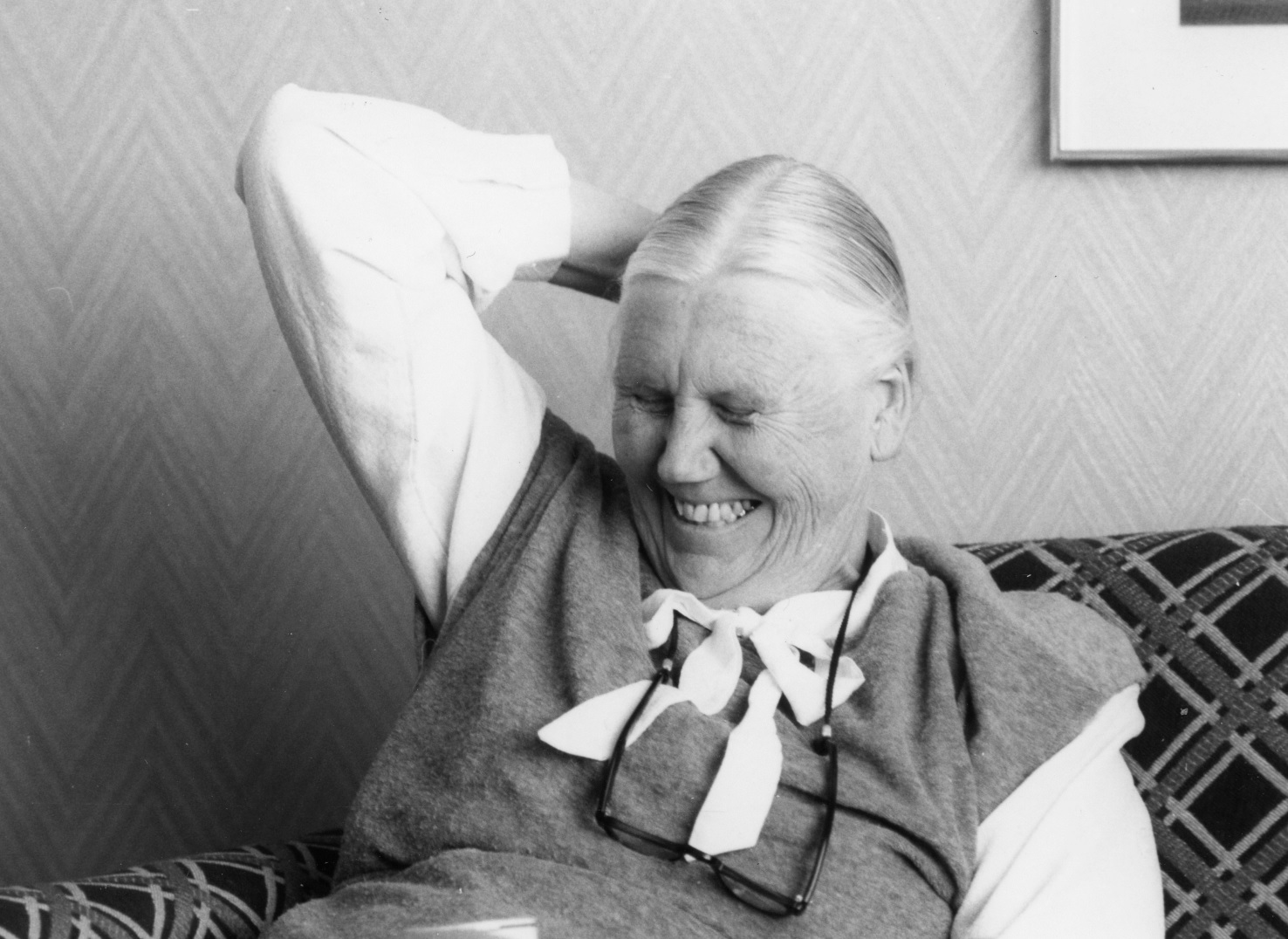Dr. Elise Boulding was a founding thinker behind the work of the Vanier Institute, a family sociologist and author whose work informed (and continues to inform) our understanding of families and family life. In 1981, she delivered a public lecture that was published by the Vanier Institute entitled The Place of the Family in Times of Transition: Imagining a Familial Future, which explores the role families play in the lives of individuals and society at large. While she delivered these words more than three decades ago, much of the content is timeless and still provides insight into how families serve as a cornerstone of our ever-evolving society.
The following is the second of two excerpts from this lecture. The full lecture can be downloaded by following the link at the bottom of the page.
Every family is a “micro-society”
We can think of each family or each familial grouping as a micro-society choosing a life path. We have discussed, at the Vanier conference over the last two days, lifestyle options. We have talked about the fact that most people really don’t have many choices in their lives. There are so many constraints, so many things one can’t do, so many opportunities that are not available because of age, sex, education, economic background, whatever. Each family, in effect, given the resources and opportunities available to it, makes choices about the kind of micro-society it wants to be. At its best, that is what the family is, a culture-choosing entity. The industrial family doesn’t do this on its own, however. There is no such thing as a familial group in isolation.
Think about an evening at home, when you draw down the blind, shut the door and settle in for a quiet family evening just by yourselves. Look at the activities that are being carried on; you are on the telephone engaged in “community networking”; you are planning a meeting, writing messages or notes about meetings; or you are reading up for some kind of personal project. At least, you are reading newspapers or watching TV to see what’s going on in the world, making shopping lists or deciding when family members need their next medical checkup, or maybe you are thinking about the next PTA meeting at school.
In short, a host of things go on inside the family setting that have to do with the community itself and with the quality of civic life. When you are out in the community, on the other hand, a lot of what you are doing is creating the quality of your family life. If you are at school expressing concern about the music or language program, or the way arithmetic is being taught, you are concerned about the quality of your child’s life. This is part of family life. It’s as a family person that you are concerned, and you are concerned not only for your own child but for other children.
Wherever we are in the community, we are constructing our family life out there. So much of the quality of our family life depends on whether we have a neighbourhood shopping centre, whether there is a mall in the downtown area, where the bus routes go, whether we have public transportation. All of these things impinge on family life. What we do in the community we also do for our family, and what we do for our family we also do for the community. The family is an interface between the public and the private.
Families provide nurturance to individuals and communities
Society requires human beings who are able to engage in nurturant acts for survival. They must be men and women. As long as nurturance is defined as women’s work, remains women’s role, society is to remain rigid and crisis-prone. Nurturance has to be a task that is jointly shared by men and women. The capacity to identify and act on the needs of others, to think about the neighbourhood, begins in early childhood. The training for nurturance, the learning, the skills, the listening, the evaluating of the response of the other comes in the family. The family isn’t the only place we learn it, but it is a very important place. Extending that process into more places in the community, creating environments where other families can have their stresses lessened so that they too can begin to engage in this kind of sharing-caring is absolutely essential if the work of professionals in social design is to have any use.
Whatever is done in terms of planning and resource redistribution at the county, state and national level has to relate to these capacities, however weak or however strong they are, that are developing inside individual families. To a depressing extent we don’t notice the kinds of help that people give each other, and therefore we don’t build on the human capacities that are already present. We put in professionally designed human services that don’t connect with the nurturance that already goes on.
One of the biggest stumbling blocks to an adequate acknowledgement of the role of the family in society is that helping behaviour and nurturance is considered women’s stuff. It’s thought of as looking after babies and seeing that husbands’ slippers and pipes are laid out. We have, in short, some very poor imagery about the work of nurturance. In fact, nurturance is intimately connected with the conditions under which human beings engage in any kind of learning. What nurturance does is allow a person to be open and vulnerable so that new information can be absorbed, new mental arrangements made of facts about the outside world. That is what happens in learning. If we don’t have places where we can be vulnerable and open, we can’t learn anything. The reason we learned so little in school is that we were scared to death of teachers and we were scared to death of tests. The family at its best is the setting for that kind of openness and learning, a social group in which we learn to accept the uses and values of vulnerability.
The family is a training ground for the future
The family is both a training ground and a metaphor for the kind of society we want. We can take the skills and the analytic capacities that are developed in the course of making judgments about what’s needed in a growing family and in a growing neighbourhood, and carry them from sphere to sphere and level to level as we move from the local to the planetary. I do not mean to oversimplify; conflicts arise, needs and wants differ everywhere. However, the mode of caring, the attitude of nurturance, the willingness to be vulnerable is always appropriate to the human condition at all times and places.


